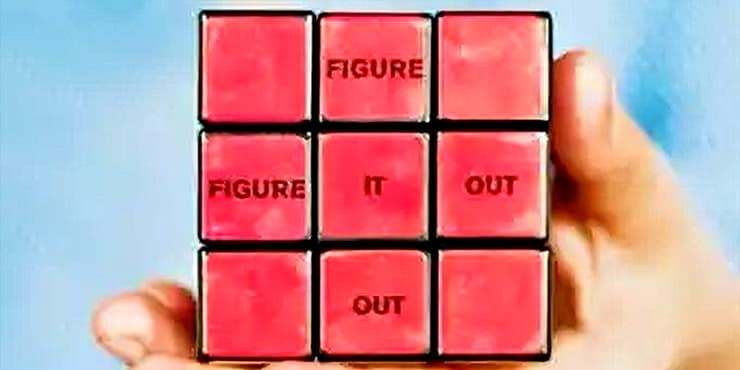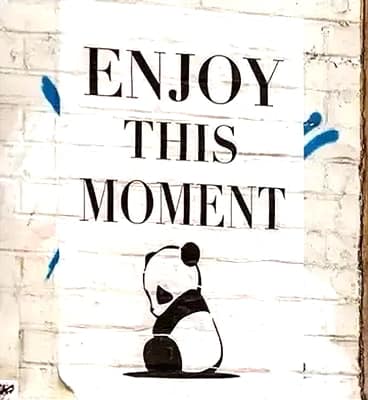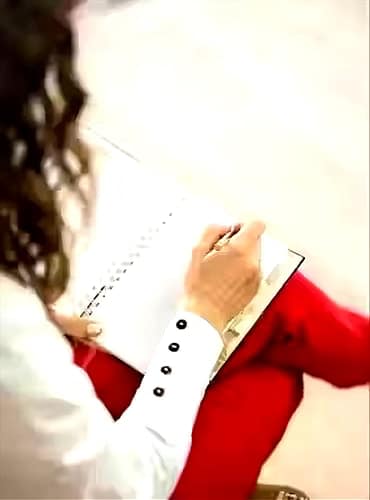How To Deal With Stress Quickly

Estimated reading time: 7 Min
Here’s how I deal with stress quickly… and you can too! I really don’t have problems! I do have regular challenges – however, never problems.
If I can’t handle a challenge easily, then I simply turn it into a project.
Turn Problems Into Simple Projects
I reckon there’s not much more frustrating than having a problem and not knowing what to do about it.
Resultant stress can lead to depression. We don’t want that!
So it’s important to learn how we can handle stressful problems quickly.
Here are a few tips to help you manage stress.
Trying To ignore it never works.
If you’re like me and try to ignore it, you may have difficulty sleeping when something’s bothering you.
The good news is that it’s easy to turn those annoying little problems into challenges and if they’re going to take a little time and thought, then turn them into projects.
So first I think, I don’t have a problem, I have a challenge.
I find that such a reframe helps to diminish stress.
There are no such things as problems, only challenges!
Then if finding and implementing a solution is more than very simple, I treat the challenge as a project.
I no longer have a challenge; it’s a project.
In fact, I’ve found that if I take some time and think through my options before acting on them, many times I don’t even have to make any difficult decisions at all!
Before doing anything else, slow down and breathe…
So, you’ve got a challenge to handle?
It really isn’t a problem you know…
Perhaps you’re frustrated and angry and just want to scream at someone (or something).
But before you do that, remember to take a deep breath…
and then another one; a great way to calm yourself down when something isn’t going your way, or doesn’t go according to plan.
Do you want to learn how to relieve stress quickly?
Take some time to breathe in slowly through your nose and out through your mouth, focusing on each breath as it flows into your body and out again.
Deliberately relax your whole body every time you breathe out. Remember to relax your facial muscles especially (easily forgotten), especially around your jaw and cheeks.
If you do that well, most of the rest of your body will respond too!
Focusing on this process of breathing helps clear the mind so that other thoughts are less likely to come in distracting ways.
With a little practice, It probably won’t take long… perhaps a few seconds up to a couple of minutes.
When doing this exercise for relaxation purposes, try focusing on your own bodily sensations: feel the relative coolness as air is sucked in through your nose; feel your lungs expand as your diaphragm pushes your midriff out.
Then the relative warmth as air flows back out and as your midriff takes on its accustomed slim state!
Take a few minutes now to pay attention to your thoughts and what is going on around you.

You can train yourself to pay attention to your thoughts and what is going on around you.
It’s hard in the beginning because you’ll often find yourself caught up in worry and rumination over the past or future.
This is natural, but it’s not helpful if you want to get things done.
Become and remain aware of what is happening in the current moment…
Here are some things that I’ve found helpful:
- When something pops into your head or a certain feeling arises, that’s less than useful, acknowledge it and then let it go (e.g., actually talk to it: “OK, thank you, I’ve got that.”).
- Focus on the present moment as much as possible by staying in touch with your body… what does it feel like?
Are there any good smells?
What can you hear?
Focus on them for a few seconds before moving on.
Set aside time each day to practice calming down.
This skill is well worth practicing.
Set aside time each day to quietly reflect.
It‘s important to have time to think, so make sure you have an opportunity for that at least once a day.
It will make a positive difference at any time you allow it to.
You can do this while exercising or even while doing chores like housework or yard work.
You also might want to set aside some time for quiet reflection when you are listening to music, or even watching television (although commercials are a challenge).
Regular, deliberate practice, will help create useful habits.
Now try to see things from a different perspective.
As you’re working through a challenge, try to see things from a different perspective.
For example:
- If you’re trying to solve an interpersonal conflict with someone at work, think about how the other person might be feeling and what their goals might be (perhaps you need to ask). Then, try to find common ground; find a way to work together on ways to achieve those goals.
- If you’re struggling with an academic assignment or test score, try thinking about it from your professor’s point of view: What is he or she looking for? What sources did they use when writing the assignment instructions? How can I use those same sources in my own research and analysis?
- If there’s something bothering you personally… maybe someone said something offensive that night at dinner…
… try taking a step back and asking yourself what was going on in their life when they said this thing. Again, perhaps you need to gently ask?
Did they have any reason for saying it other than malice?
Did they have another thought process going on while they were speaking (like maybe they forgot where they were or who else was present)?
Work on it: identify the challenge (or problem if you still think that way).
Before you can really get to work on solving a challenge, you need to become clear about it.
Identifying the challenge means figuring out the detail of what it is:
- Ask yourself questions about your situation.
What is this challenge?
How did it come about?
If there are several problems all tangled up with one another, how can I split them apart so they’re easier to handle separately?
What do I want instead of this challenge? (Not what other people want… what’s important for me). - Break down anything that seems too big or overwhelming at first glance into smaller parts.
Is this an opportunity, or just a challenge?
Do I actually have control over any of these factors?
Write it all down.

You’re going to write it down.
All of it.
The challenge, what you want instead, the options and pros and cons of each option…
… even your feelings about the situation.
It’ll help you become more objective about your current situation by helping to see both sides more clearly (the pros) as well as understand what might happen if you choose to do nothing (the cons).
This process can help turn an overwhelming problem into a manageable opportunity.
An opportunity for growth…
… by focusing on solutions (options) rather than challenges alone.
Gather facts that relate to the problem, including the pros and cons of possible solutions.
To gather facts that relate to the problem, including pros and cons for possible solutions, do the following:
- List each fact or piece of information you have about the problem.
- Organize your list by category. For example, if you’re trying to figure out how to open a new manufacturing plant in a rural area, organize your list of facts into categories such as “costs” and “benefits.”
- Rate each fact based on its importance to solving this particular problem (1 = least important; 10 = most important). This will help prioritize which facts deserve more attention when brainstorming solutions!
Focus on one challenge at a time.
Many times we try to solve too many at once, which over-stresses us and creates additional challenges.
For example, if you want to lose weight and improve your health but you’re also trying to figure out how to balance your work schedule with your family life, all this thinking can be extremely stressful.
If that’s the case, focus on one issue at a time until it’s resolved.
Then move on to the next issue until they’re all taken care of.
Slow down and consider things before deciding what to do about them.
Take a break… once you’ve taken a break, think about what’s bothering you.
Then use the G.R.O.W.T.H process to get organised and follow through.
That way you’ll consider all the possible solutions that could be used to handle the challenge.
There is usually more than one way of handling any situation.
Consider all that you can think of before making a decision on a way forward.
Instead of focusing on everything at once, focus on one issue at a time until it is resolved.
Then move on to the next thing on your list until everything’s taken care of (or at least put into perspective).
Summary
I hope these tips have been helpful.
They will be, especially if you follow through with the G.R.O.W.T.H process.
Please… look after yourself!
If you have any questions, please let me know in the comments below or via the contact form.
🙂
Richard






